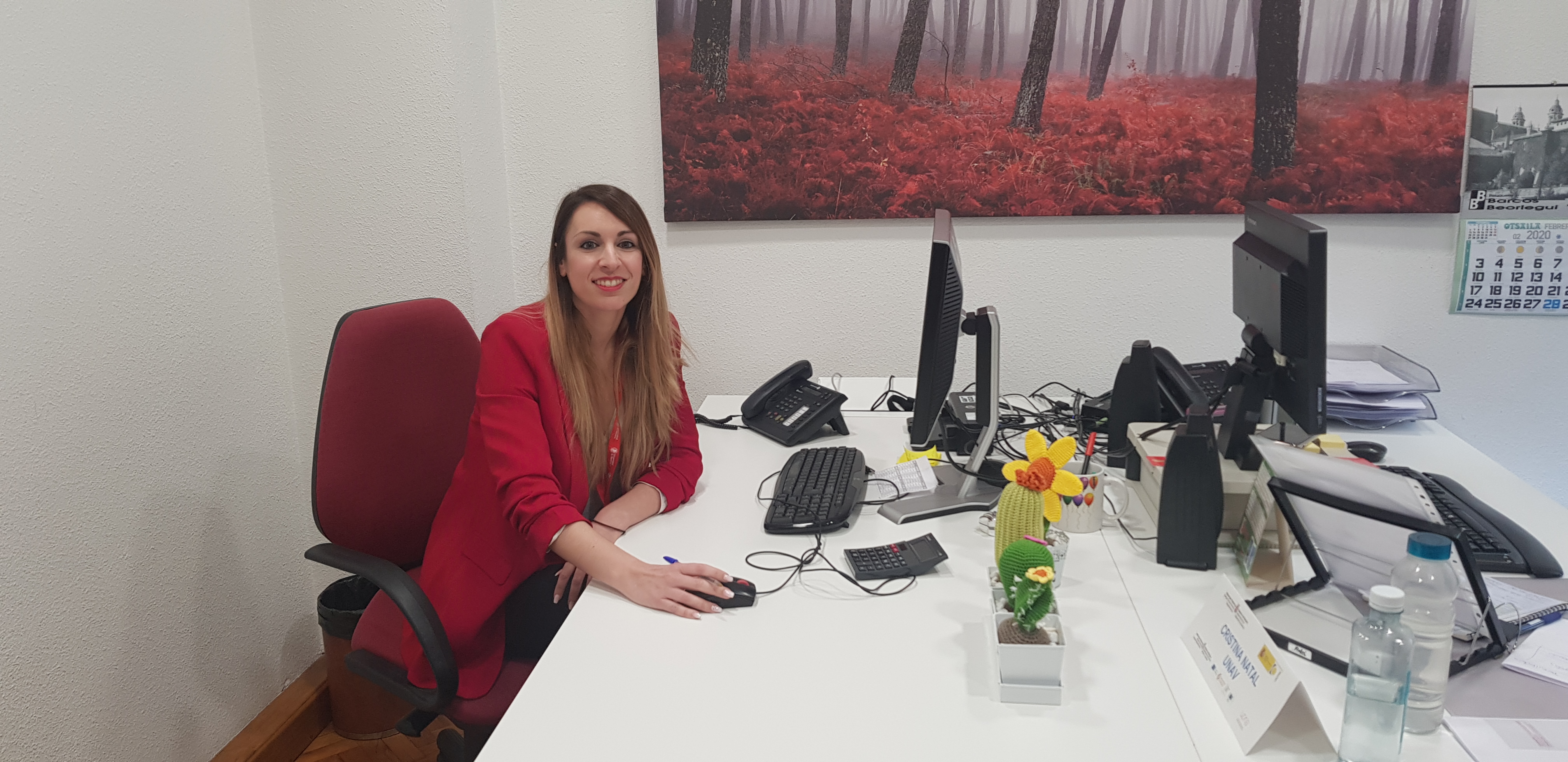Communication
Sudoe News
30 years of Interreg: addressing childhood hearing loss. Interview with Itziar Gómez
Categoría General
This year Interreg celebrates its 30th birthday, focusing on three topics of interest for the European cohesion: youth, a greener Europe and we all have a neighbor. In this context, each month, we will interview one of our emblematic projects related to one of these topics.
This month we talked with Itziar Gómez, international project manager in the health area of the Research Management Service of the University of Navarra, in charge of the GHELP project. This project aims to innovate in the detection and treatment of hearing loss through the design, development and validation of a genetic diagnostic panel: the GHELP panel. The approach is to combine knowledge and technology to move from a medicine based on the treatment of symptoms to a personalized medicine. In the framework of the celebrations of the 30 years of Interreg, GHELP has been highlighted as an emblematic project and selected as one of the 30 projects that will be part of an itinerant exhibition.

What is the GHELP project?
GHELP is a transnational cooperation project in which 8 entities from 3 different countries are involved with the common objective of providing society with an innovative tool to know the genetic origin of hearing loss. This health problem may be due to different factors, including genetic factors. More than 60% of hearing deficits in new-borns have a genetic origin. Our goal is to develop and validate a genetic diagnostic panel thanks to which, with a blood sample, we can analyse the 180 most relevant genes detected in hearing loss, know the origin of the problem and ensure that the best treatment is applied to the patient in an early stage. In the case of children, when they are born they are tested to see if they listen or not in the framework of a public screening program or neonatal screening. Our objective is that within the tests carried out in these programs, our tool is introduced as a key test. For this, we will not only demonstrate to the competent Health Administrations the scientific viability of our tool but also its economic viability.
How are you managing to produce this tool?
When we build the consortium, we select the partner entities based on their know-how and expertise and make sure that we complement each other well. On the one hand, there is the University of Navarra that has CIMA Lab Diagnostics, a comprehensive genetic and phenotypic diagnostic laboratory of the University of Navarra Clinic (CUN). The laboratory consists of geneticists, laboratory technicians and professionals who work together in the development of this type of tools. We also have DREAMgenics, a SME located in Oviedo and specialized in the development of quality genomic and bioinformatics solutions. They are involved in the bio-informatic development of the panel and their knowledge is essential. In addition to CUN, we also have four clinical centres, two in France and two in Portugal (CHU Toulouse, CHU Montpellier, Centro Lisboa Hospital Center and CUF Porto) that participate providing patient blood samples to perform clinical validation. Finally, the Institute of Public and Labor Health of Navarra is in charge of preparing the economic feasibility study of the tool and of being the link with the Public Health Administrations in charge of the screening programs in the regions participating in the project.
Why did you decide to focus the project on children's hearing loss?
It is very important to address this issue as soon as someone is born. If we do not detect hearing loss as soon as possible and do not treat the baby, the problem will affect your ability to speak and understand the language. For this reason, it is imperative to treat babies before 6 months of age. If we will achieve to introduce this test within the protocols to detect hearing loss in newborns, we would know what the evolution of a baby affected by a specific genetic cause could be and treat it early.
We see in this video Laura's parents who tell us why they participate in the project and how they value GHELP. From your point of view, how does this project improve the lives of families?
I think it opens totally a new horizon. When they face this problem, it is usually something unexpected for them. In some cases, there is not even a family history that explains it and therefore they do not understand the reason for this situation. Many feel lost. This project helps them to truly know what is the reason for their daughter's hearing impairment. Thus, if they plan to have more children in the future, they can decide with more information. Sometimes, this type of knowledge affects family planning not only of the baby's parents but also of the baby when he/she is older. In general, the project helps to clear doubts and fears due to ignorance. Information is what gives you calm. This is what we want to do: with our knowledge about what science has advanced today and the tools we can make available to patients and their families, we offer a tool to parents eager to know more.
GHELP has been highlighted as an emblematic project to celebrate 30 years of Interreg. What inspires you?
Pride! We are very proud and surprised because we believe that the theme of our project is important. All issues that affect people's health are important and everyone needs their dimension in Europe. Hearing loss touches all of us very closely, to a greater or lesser extent. Seeing that our project has aroused interest in Europe makes us very proud. Thanks to this, we hope to have more visibility and reach more people in Europe.
Why Interreg? What does it give you?
Interreg is a programme that gives us the opportunity to propose a project of these dimensions in a very simple way and, therefore, to make our goals come true. For us, it is one of the best vehicles to reach our aim and from which we are learning a lot. It allows us to work and cooperate very closely with other entities in our research area. Interreg is also a flexible program regarding the subject of research and innovation projects. Our project idea did not fit in other European programmes such as Horizon 2020 and thanks to Interreg we have been able to get the funds we needed.
Thank you very much Itziar!
For more information about GHELP: http://ghelp.eu/



